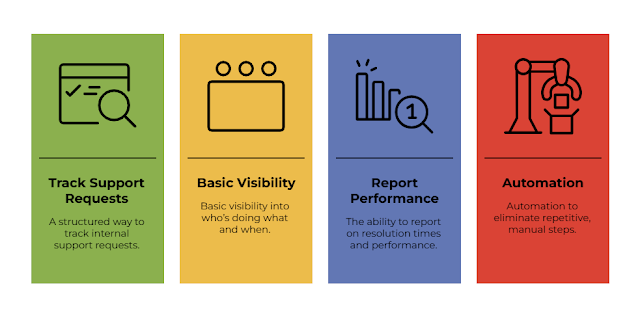IT Management Tools Explained: What You Really Need (and What You Don’t)

Managing IT operations isn’t just for enterprise giants
anymore. With remote work, digital-first teams, and growing internal support
needs, even small businesses are exploring their options for IT management
tools. But what exactly falls under that umbrella—and how much of it do you
actually need?
You’ll find no shortage of “top 10 IT tools” lists online,
but many of them overlook a basic truth: most teams don’t need
enterprise-level software suites to manage IT effectively. Here’s a
breakdown of what’s out there, what’s essential, and how to build a stack that
works for you.
What Are IT Management Tools?
Broadly speaking, IT management tools include any software
that helps teams monitor, support, secure, and optimize their technology
operations. This can span:
- Asset
tracking and inventory
- Endpoint
management
- Help
desk ticketing
- Automation
platforms
- Reporting
and analytics
- Documentation
and knowledge bases
That list sounds impressive—but for many small and mid-sized
teams, it’s overwhelming and often unnecessary.
What Most Businesses Actually Need
If you're running a lean IT team or supporting internal
operations without a dedicated enterprise IT staff, the core needs are much
simpler:
%20-%20visual%20selection.png)
- A
structured way to track internal support requests
- Basic
visibility into who’s doing what (and when)
- The
ability to report on resolution times and performance
- Automation
to eliminate repetitive, manual steps
And the right tool for that? A solid help desk platform—the
most essential of all IT management tools for growing teams.
The Role of Help Desk Software in Modern IT Management
A modern help desk isn’t just a place to track issues. It’s an operational anchor for your IT support processes. The right platform:
- Makes
it easy for employees to request help
- Assigns
tickets automatically based on category or urgency
- Tracks
resolution timelines
- Provides
data you can use to improve performance
Revelation helpdesk, for example, gives internal IT
teams and managed service providers a centralized way to manage tickets,
communicate across channels, and monitor SLAs—without the overhead of an
enterprise ITSM platform.
Flexibility Matters: Tools That Fit Into (Not Take Over) Your Stack
The problem with many enterprise IT tools is that they
demand adoption of their entire ecosystem. Revelation helpdesk takes the
opposite approach.

- Microsoft Teams
integration lets you create, assign, and manage tickets directly
from Teams chats or channels.
- Email-to-ticket
conversion ensures requests never get lost in inboxes.
- Custom
workflows and automation reduce manual work without locking you into
rigid protocols.
This kind of modular, integrative design is key for
growing teams that need agility more than a long onboarding cycle.
What If You Need More Than a Help Desk?
Revelation helpdesk is built to be the foundation of your IT
support stack—not the whole thing. If your team later adds endpoint monitoring,
asset tracking, or documentation tools, Revelation integrates smoothly and
doesn’t get in the way.
Instead of trying to do everything, it focuses on doing
ticketing, automation, and communication extremely well—so you can grow your
stack intentionally, adding only the tools you actually need.
Supporting Tools You May (or May Not) Need
As your business evolves, you might consider expanding your
toolset. Here are a few common categories, and when they’re actually worth
considering:
| Tool Type | What It’s For | When It’s Useful |
|---|---|---|
| Endpoint Management | Monitoring and updating devices | If you manage 50+ distributed devices |
| Asset Tracking | Managing hardware, licenses, and warranties | If you need to track inventory across teams |
| Automation Platforms | Reducing manual handoffs and workflows | If you’re drowning in repeat tasks |
| Documentation Tools | Creating internal knowledge bases or runbooks | If team turnover or process standardization is key |
Revelation helpdesk is designed to integrate well with these
types of tools—so your help desk stays at the center of your operations,
without trying to do it all.
Why Simplicity Wins
The truth is, overbuilding your IT management tools stack
adds cost and complexity. And worse—those tools often go underused. That’s why
our recommendation is to start with a lightweight, powerful help desk that
scales with your needs.
Build a Stack That Serves You—Not the Other Way Around
Whether you're running an internal IT team or managing
clients as an MSP, the best IT management tools are the ones that actually get
used. Revelation helpdesk helps you:
- Stay
organized
- Automate
repetitive tasks
- Get
visibility into performance
- Expand
your stack only when you’re ready
Looking to simplify IT operations without overcommitting
to a complex stack? Schedule a demo to see how Revelation helpdesk can streamline your support processes
from day one.



Comments
Post a Comment